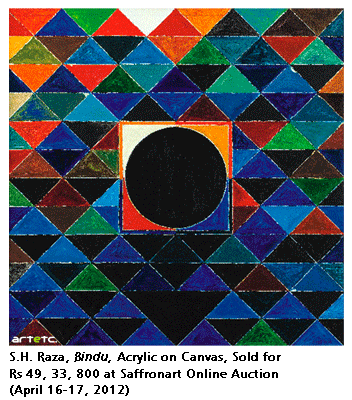- Editorial
- Shibu Natesan Speaks on Protest Art
- Rising Against Rambo: Political Posters Against US Aggression
- Transient Imageries and Protests (?)
- The Inner Voice
- Bhopal – A Third World Narrative of Pain and Protest
- Buddha to Brecht: The Unceasing Idiom of Protest
- In-between Protest and Art
- Humour at a Price: Cartoons of Politics and the Politics of Cartoons
- Fernando Botero's Grievous Depictions of Adversity at the Abu Ghraib
- Up Against the Wall
- Rage Against the Machine: Moments of Resistance in Contemporary Art
- Raoul Hausmann: The Dadaist Who Redefined the Idea of Protests
- When Saying is Protesting -
- Graffiti Art: The Emergence of Daku on Indian Streets
- State Britain: Mark Wallinger
- Bijon Chowdhury: Painting as Social Protest and Initiating an Identity
- A Black Friday and the Spirit of Sharmila: Protest Art of North East India
- Ratan Parimoo: Paintings from the 1950s
- Mahendra Pandya's Show 'Kshudhit Pashan'
- Stunning Detours of Foam and Latex Lynda Benglis at Thomas Dane Gallery, London
- An Inspired Melange
- Soaked in Tranquility
- National Museum of Art, Osaka A Subterranean Design
- Cartier: "Les Must de Cartier"
- Delfina Entrecanales – 25 Years to Build a Legend
- Engaging Caricatures and Satires at the Metropolitan Museum
- The Mesmerizing World of Japanese Storytelling
- The Metropolitan Museum of Art Exhibiting Lyrical Visions: Paintings from North India
- Random Strokes
- Asia Week at New York
- Virtue of the Virtual
- What Happened and What's Forthcoming
- Art Events Kolkata, March – April 2012
- Mumbai Art Sighting
- Art Bengaluru
- Delhi Dias
- Preview, April, 2012 – May, 2012
- In the News, April 2012
- Cover
ART news & views
Virtue of the Virtual
Issue No: 28 Month: 5 Year: 2012
Let us for once turn our attention from the brick and mortar auction floors around the world to what is happening on the ethereal space. After all, art and antiquities have always had an ethereal quality about them, and it was such an irony that till now, the public domain had restricted such ethereal creations to the confines of the auction floors.
We are talking of ether, or what is better known and understood these days as the virtual space. And online bidding seems to be the hottest phenomenon in a world which has till recently relied on the more solid confines of physical space. Otherwise, it cannot be a mere coincidence that a mainly online auction house like India's Saffronart's business model becomes a case study in one of the world's best known business schools like Harvard. It can also not be a coincidence that the duopoly of Christies and Sotheby's are now regularly aligning their physical auction events with their online facilities, thus trying to cater simultaneously to a bigger and more varied market.
As Nicholas Forrest, the art commentator and owner of the artmarketblog wrote recently, “The number of websites that facilitate the online sale and purchase of fine art has increased significantly over the last few years as collectors and investors become more confident in the ability of online art sales portals to provide a sufficiently high level of service, quality art, security and peace of mind.
“High-end online art sales portals such as Blacklots, Artnet Auctions, Christie's, Paddle 8, Saffronart and Artprice Auctions have emerged as leaders of the online art market due mainly to the reputation and influence of the people involved in the development of these websites.”
Actually, even a couple of years back, online auction sites were not very trusted sources. The reasons were many. For one, online transactions were not safe enough, especially when it came to transacting art pieces, which are priced in millions of dollars. Shipment and delivery was also a problem. In short, the main roadblock to online bidding was in the infrastructure involved at the backend. All that was set largely aright by a man called Dinesh Vazirani when he created Saffronart and set some of the highest sale records for Indian artists, both in terms of online bidding and on-floor prices. And it was a matter of a couple of years before the phenomenon inspired the Western mandarins and exclusive online portals like Blacklots were founded.
In an interview to Business Today's Anumeha Chaturvedi in February this year, Nish Bhutani, COO of Saffronart noted, “Our auctions sales registered nearly 100% annual growth from 2000 till the financial crisis in 2008. Since the downturn auction sales have recovered strongly and we have diversified the business further into jewelry, high-end homes and new categories in art such as western art.”
What is most important to note here is that the promoters of online bidding are aggressive in their stance. Thus, Minor Childers, the co-founder of online art auction site Blacklots, in an interview to Forrest says, “There are few industries left with the kind of inefficiencies that exist in this market it's inevitable. I hope we are the ones to do it. We launched Blacklots in April of last year (2011). From the moment we started we have gotten a positive and engaged reaction from collectors. The global “art market” is huge and roughly 90 percent of the works out there are sold across 3600 auction houses it's a very segmented market. It's an inefficient market, one of the last industries with these kind of inefficiencies we created Blacklots in response to this.”
 Michael J. O'Neal, Senior Vice President and Digital Media Director of Christie's LIVE™, which was launched way back in 2006, but have had to wait for almost five long years to grab eyeballs of major collectors and dealers, however is a lot more restrictive in his expression of success, but nevertheless points out how the Christies portal have competed with the centuries-old parent organization to bring in a wider market communiqué. “In 2011, the online channel continued to attract new clients and prompt greater interactive engagement. Our website, www.christies.com, welcomed 77% more unique visitors than the previous year. In total 29% of Christie's bidders transacted online (not including the online-only auction of the Elizabeth Taylor Collection). Christie's LIVE™ drew 25% more bids than the previous year with two works of art selling online for over the $1 million mark. I think that these statistics are very indicative of the level of success we are currently experiencing,” he says.
Michael J. O'Neal, Senior Vice President and Digital Media Director of Christie's LIVE™, which was launched way back in 2006, but have had to wait for almost five long years to grab eyeballs of major collectors and dealers, however is a lot more restrictive in his expression of success, but nevertheless points out how the Christies portal have competed with the centuries-old parent organization to bring in a wider market communiqué. “In 2011, the online channel continued to attract new clients and prompt greater interactive engagement. Our website, www.christies.com, welcomed 77% more unique visitors than the previous year. In total 29% of Christie's bidders transacted online (not including the online-only auction of the Elizabeth Taylor Collection). Christie's LIVE™ drew 25% more bids than the previous year with two works of art selling online for over the $1 million mark. I think that these statistics are very indicative of the level of success we are currently experiencing,” he says.
In fact, Christies have been on of the first auction houses to launch an online facility and since then have continuously invested in the digital space, to reach out to more and more customers. As O'Neal points out, “Part of the beauty of buying art online is presenting people from all over the world with the opportunity to bid live in Christie's salerooms. For that reason, we are proud to have active bidders from a great range of countries, from the United States and the United Kingdom, to quickly growing markets in Brazil, Russia, India and China.”
However, it is Childers who gives a more interesting insight. When questioned about the main characteristics of his customers, he said, “(they are) Nothing consistent. We have new collectors and major collectors selling and buying on Blacklots. Collectors who want to sell their contemporary art and both new and existing collectors that want to buy contemporary art. Really on the buy side it is much broader, we are connecting not only with people familiar with this world but also people that are just getting interested and professionals like decorators that need to source multiple works quickly. The whole point of Blacklots is to be a tool, something that makes our lives easier. Blacklots allows many users access to these works that for one reason or another they do not have.”
 Both the answers point towards one thing at least that the introduction of the internet in the traditional bidding space has definitely enlarged the market as well as given a greater variety to the demography of bidders as well as sellers.
Both the answers point towards one thing at least that the introduction of the internet in the traditional bidding space has definitely enlarged the market as well as given a greater variety to the demography of bidders as well as sellers.
Interestingly, Saffronart, which had been the pioneer in India's online art sales, contrary to its flagship business, opened a third gallery space in Delhi last year. Art enthusiasts were curious is the virtual space proving insufficient for the art business?
Art Radar India had then and there approached Vazirani with the question. But the CEO and co-founder of Saffronart held his ground, noting that “there has been a shift towards greater comfort with viewing, evaluating and purchasing art online and on mobile devices.” Then why a third gallery space? His answer was that there is always this lasting importance of face-to-face interaction with significant clients, particularly when high value items were concerned. “Broadly speaking,” he elaborated, “the better known the artist and the more experienced the collector, the greater comfort there is when buying online.” Western consumers, he pointed out, are generally more familiar with online purchasing than their customers in India, though the gap is closing rapidly: “Our biggest collectors are based in India and comfortable with viewing and purchasing online,” he had said to Art Radar.
So what is the future of online bidding? Will it become more important than the physical bidding space? Does it have the potential to overwhelm one of the most well-established business models in the future, as the internet has in other cases like the mediafast replacing the physical newspaper with the virtual e-paper?
“It is too early to predict,” says a well-known art enthusiast and collector. “One still cannot rule out the physicality that a collector enjoys while confronting a work of art face-to-facethe size, the texture, the smell all that become part of the experience. At the end of the day, you buy art because you love it, not for the heck of it. And no matter what, the internet can never give you that totality of experience.”
Be that as it may, online bidding is here to stay that much is for sure.